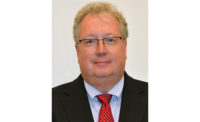The CSAA Looks to Continue Its Momentum

The Central Station Alarm Association marked its 65th anniversary in 2015 with a year that has been filled with activity and advancement both for the association and for the members it serves. Between its revamped Annual Meeting, growth in the ASAP program and identifying the critical actions necessary to help members meet today’s industry challenges, the association has achieved a few significant accomplishments and identified 2016 initiatives.
CSAA has a diverse membership of local, regional, national and international companies — monitoring centers, manufacturers and consultants — all with somewhat different needs and expectations from their CSAA membership. When I accepted the position as executive director of CSAA back in April, Pam Petrow (president and CEO of Vector Security) became president. Together we initiated a Voice of the Customer (VoC) research program to help us better understand the needs of our membership, and thus identify how CSAA can improve member value. The results of the program are already being implemented as Pam and I and our board of directors define the
association’s strategic direction.
Education is one of the topics the majority of members said was critical to their businesses’ success. CSAA has embarked on a full-scale effort to update and improve its education offerings. From revamping distance learning content for relaunch in 2016 to the 2015 annual meeting in Sonoma in October — which saw a roster of highly-regarded paid speakers and the highest member attendance since 2008 — the association is making progress toward meeting members’ demands in this area.
I am excited that ASAP-to-PSAP deployment, the electronic communications service between Public Service Answering Points (PSAPs) and monitoring centers, realized significant growth in 2015. The momentum from 2015 will continue in 2016, putting the goal of widespread deployment in sight. Monitoring companies with national footprints connecting to ASAP-to-PSAP have been the impetus for the recent growth. ADT, Diebold, Stanley and CMS all recently went live with the service. And most importantly, as a result of the significant geographic footprint of monitoring centers, an ever-growing number of PSAPs now fall within the service footprint and can benefit by connecting.
Despite the recent momentum, CSAA is determined not to sit back. My goal is to stay focused on assisting members with continued crucial outreach to PSAPs, providing ongoing awareness of the benefits of getting on board.
Finally, CSAA will be at the forefront of promoting the value of professional monitoring. Venture capital funding and individual entrepreneurial efforts have driven an increase in investment in “start-up” companies entering CSAA’s space, most with direct-to-consumer “do it yourself” (DIY) business models. These new entrants offer varying and sometimes unique monitoring solutions, from self-monitored through professionally monitored, as well as hybrids of both. The DIY models will, I believe, ultimately solidify the value of professional monitoring.
Looking for a reprint of this article?
From high-res PDFs to custom plaques, order your copy today!






